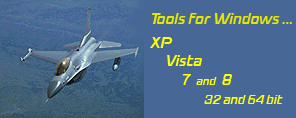
|
![]()
WAV
![]()
|
![]() Historical time-series
compression
Historical time-series
compression
![]() Simplifies data for
modeling leading indicators
Simplifies data for
modeling leading indicators
You can now overcome a huge problem inherent in financial data when creating leading indicators. WAV can squeeze hundreds of data points in a time series into a much smaller set of numbers. Ideal for creating leading indicators that require, for each forecast, information spanning large amounts of history. |
| What Is WAV ? |
Because all markets have different degrees of weak-form efficiency, prior and current market action have varying utility in forecasting future action. When this utility is high, it makes sense to feed a trading system indicators that summarize aspects of past market activity. Yet it is shocking that most traders have no idea which prior data values to use: should technical analysis cover yesterday's values, the day before, the week before, every other day, every other week, month, etc.? In other words ...
What historical values should we feed a leading indicator?
To answer this question, consider that a time series may include some weak and-or strong cycles, and cycles are predictable. Therefore, in order to exploit inherent predictability, any scheme for selecting particular historical values of market data should consider the notion that critical forecasting information may lie in both short (fast) and long (slow) cycles. WAV captures both types of information.
Here's a brief description of how the user views WAV ...
|
| Detailed Description |
A portion of this section assumes you are familiar with
the standard regression tool in Microsoft Excel.
Imagine having one column of price data on your spreadsheet and you want to make forecasts based on the historical behavior of this price action. Also suppose your forecasting system (eg. a neural net) needs to have information about the last 120 bars of activity in order to make a forecast. To use WAV, all you need to do is specify the price data, and command WAV to use a sampling scheme with a moving window 120 bars wide. That's all!
WAV will automatically add to your spreadsheet additional columns of numbers, running alongside your original column of price data. For each forecast, instead of feeding your leading indicator the most recent 120 values of the price time series, instead you use the few numbers running across any row on the spreadsheet. The next row provides the historical information you need for the next forecast, and so on. This row-by-row arrangement of data is favored by regression models, neural nets, and most other modeling tools.
Just a few numbers of WAV's output can contain a wealth of historical information for your forecast and trading systems. This allows faster and more reliable system development.
For some types of time series, proper forecasting requires the data be first detrended, normalized, or both. WAV offers the user these options and will preprocess your data automatically. WAV will save you from spending many of hours detrending, sampling, filtering and arranging your financial data for model building.
| Lab Results |
In our signal processing laboratory we built two regression models designed to forecast future values of a version of the Mackey-Glass chaotic time series (shown below).

Input to the first model consisted of evenly spaced samples along the time series; analogous to using historical closing prices of gold, spaced N days apart. We ran various experiments with this regression model, each time increasing the number of inputs and watching how that affected output error. As more historical values were used, regression error diminished.
For the second model, we simply applied WAV to the time series and fed WAV's output columns to the regression model. We ran various experiments, each time increasing the number of columns from WAV and watching how that affected output error. Typically, as we added more columns, regression error diminished.
The chart shows that, for any chosen number of inputs used in both models, the data produced by WAV gave lower forecast error. For example, when only four samples of the time series are used to make each forecast, WAV gave an overall prediction error of 9.8%, while uniform sampling gave a much larger overall error of 15.6%! |

|
| Applications |
 See how one consultant used WAV in an equity trading system for a major
bank.
See how one consultant used WAV in an equity trading system for a major
bank.

 An early version of WAV
quickly became very popular and was mentioned in CNBC's Tech Talk with John
Murphy. Also, the WAV data preprocessing methodology was used by Futures
Magazine contributing editor Murray Ruggiero in many of his trading systems. He
described two such systems in these issues of Futures:
An early version of WAV
quickly became very popular and was mentioned in CNBC's Tech Talk with John
Murphy. Also, the WAV data preprocessing methodology was used by Futures
Magazine contributing editor Murray Ruggiero in many of his trading systems. He
described two such systems in these issues of Futures:
| Available Platforms |
REQUIRES also having WAV for Microsoft Excel.
The user first exports time series data from TradeStation to a Microsoft Excel spreadsheet. The series can be market price, or from various technical indicators (e.g. RSX). He then applies WAV in Microsoft Excel to each time series column, creating corresponding new columns with a chosen degree time series compression. At this point, we recommend collecting all the output columns from WAV, as well as other time series data, into an array and decorelate the array with DDR. The selected output columns from DDR can be used directly as new time series technical indicators, or be fed into a modeling tool (e.g. neural net or genetic algorithm) for forecasting purposes.
With a spreadsheet, the user can see all the columns of data being produced, making it easy to inspect and select which columns to feed each successive process (technical analysis -> WAV -> DDR -> forecast module). Only after this has been accomplished do we recommend reconstructing the temporal compression of WAV and spatial decorrelation of DDR in TradeStation, bypassing the spreadsheet altogether. The result can be applied to real-time and end-of-day data.
Microsoft EXCEL (97, 2000-2003, XP)
DLL (for software programmers)
| Additional Information |
The WAV software package includes ...
 |
For more details on WAV, download our illustrated PRODUCT GUIDE. Download our TECHNICAL REPORTS.
Read our
CUSTOMER's LETTERS.
Read our
FREQUENTLY ASKED QUESTIONS.
|
WAV
performs decorrelation. It is not a trading system. |
|